Art Deco green glazed ceramic panther sculpture, 1930s
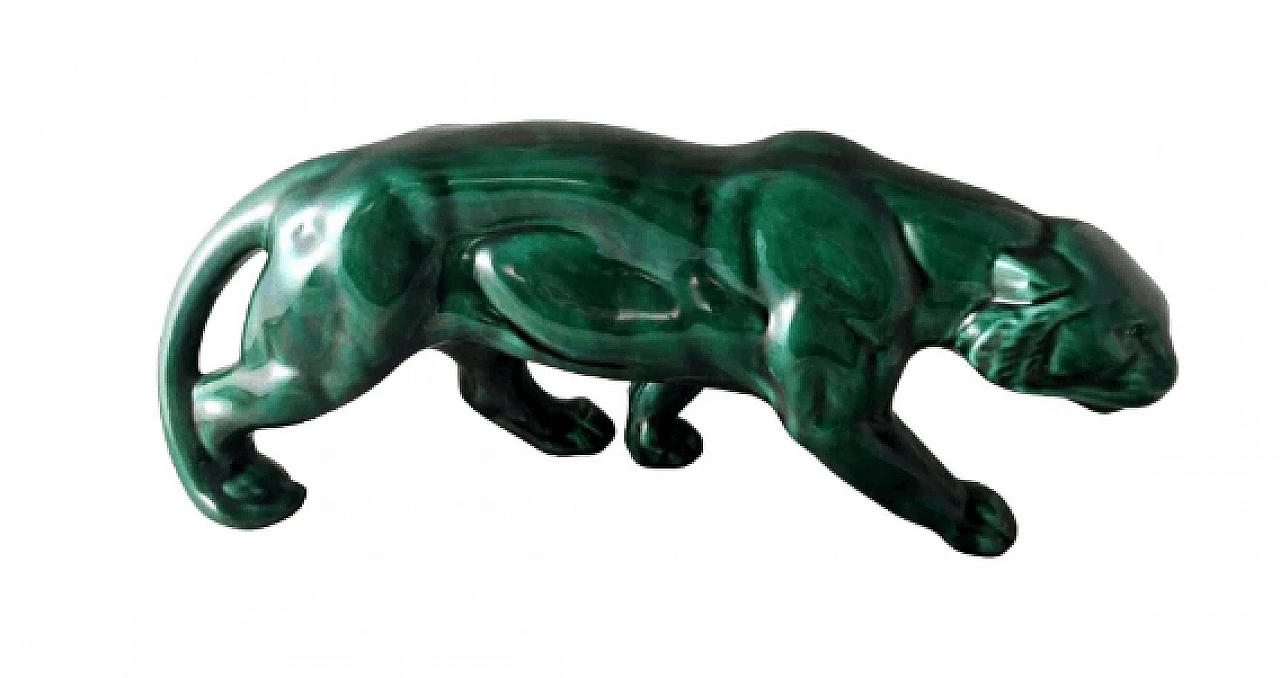
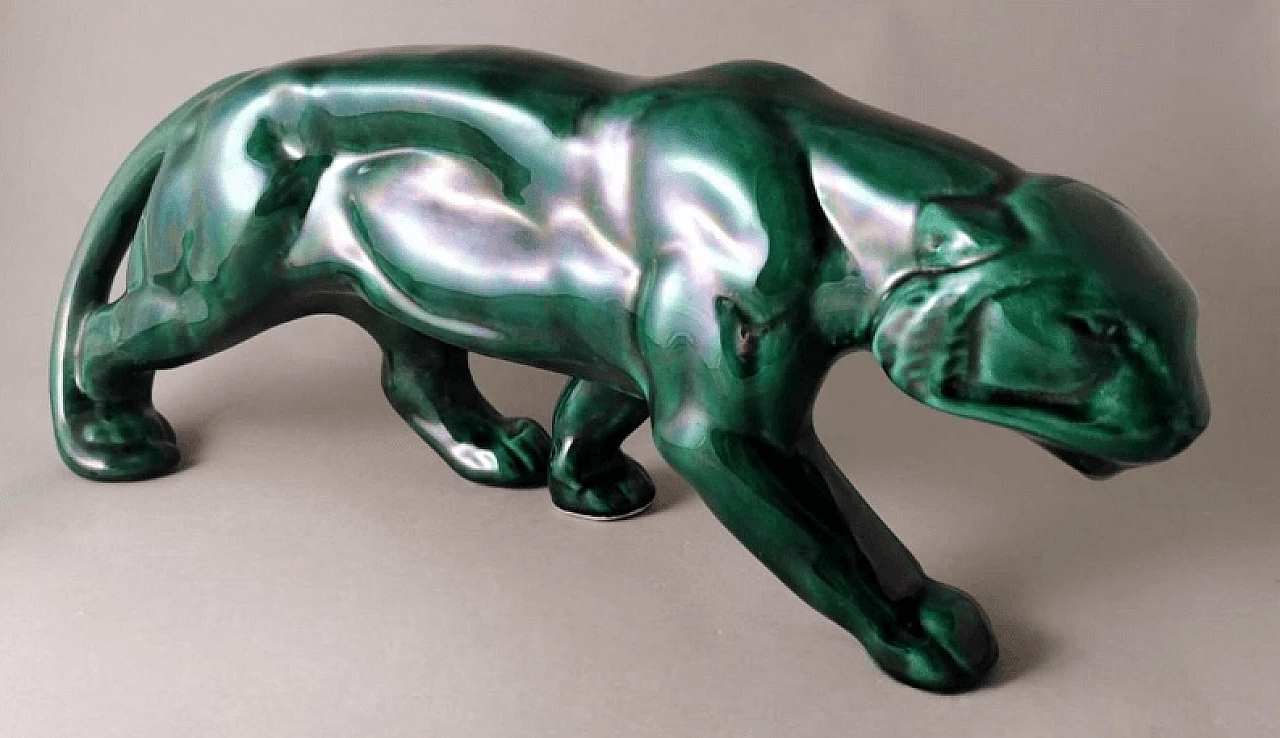
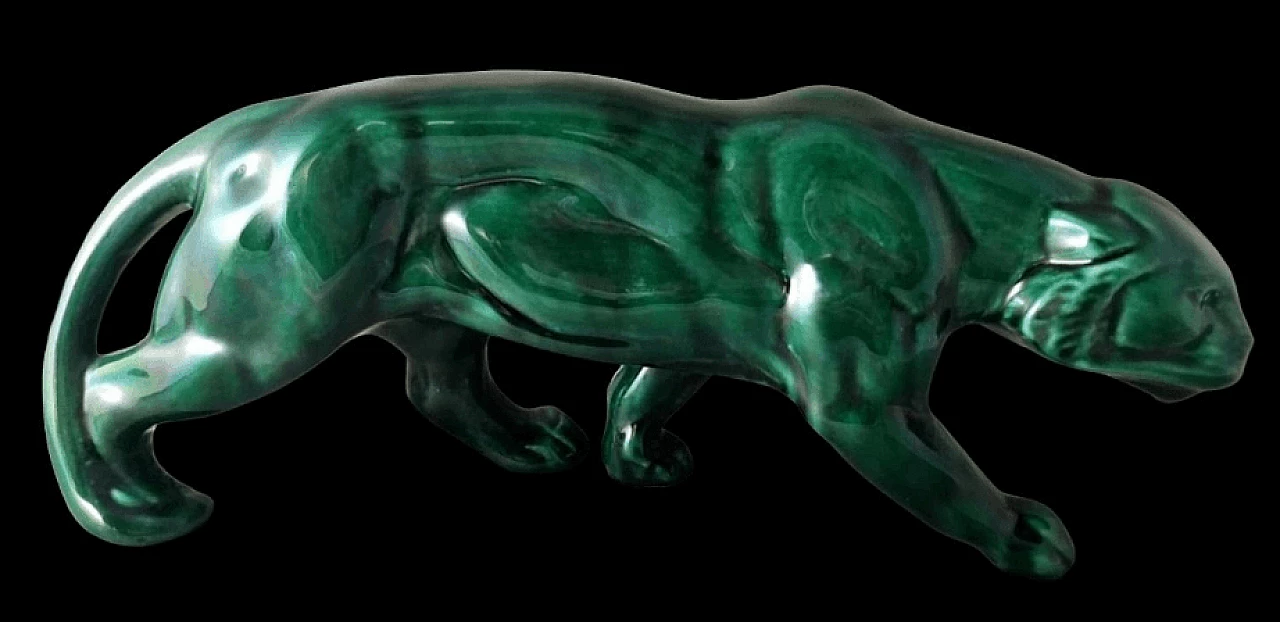
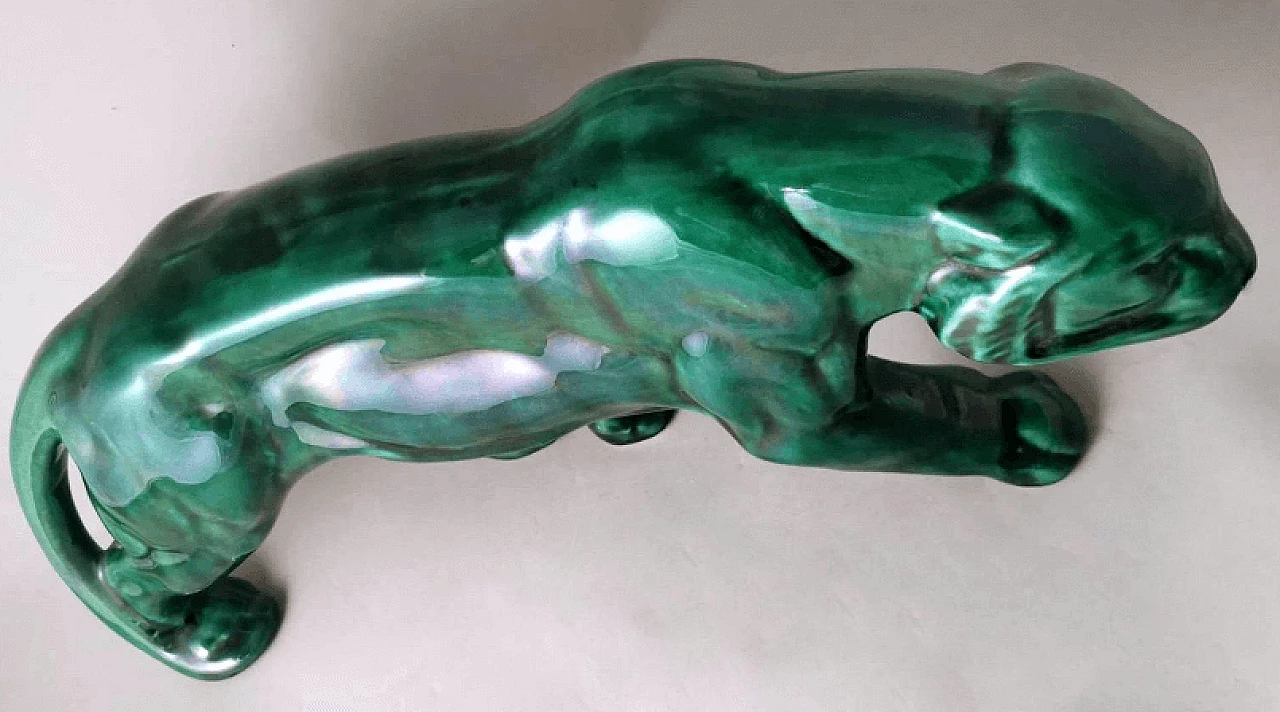
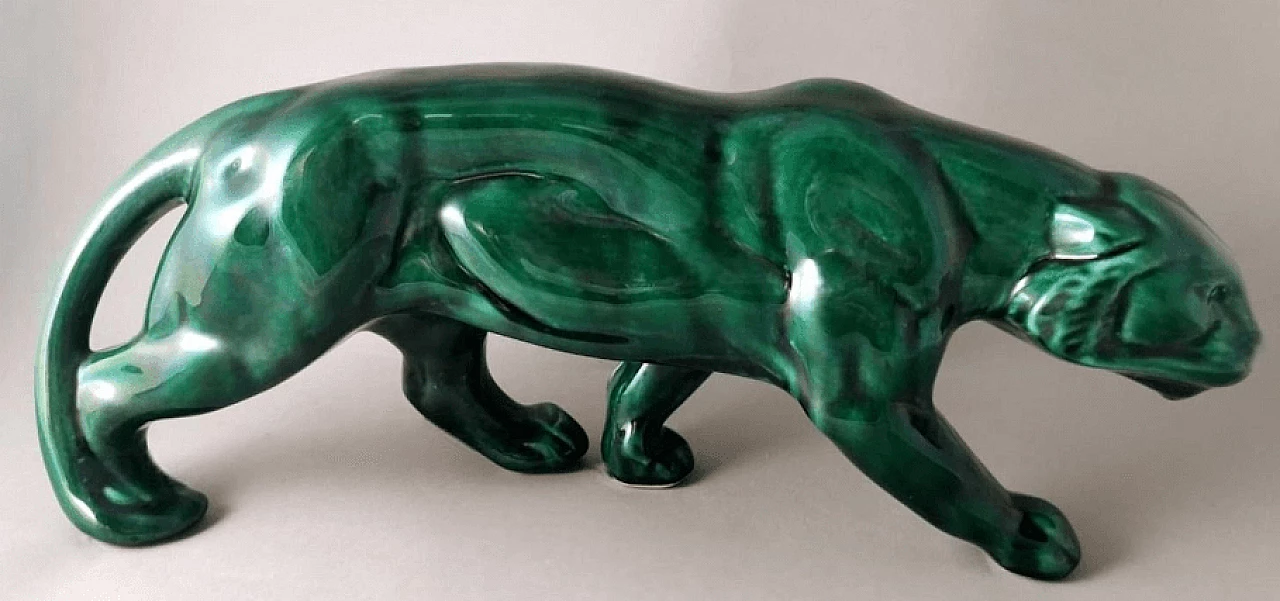
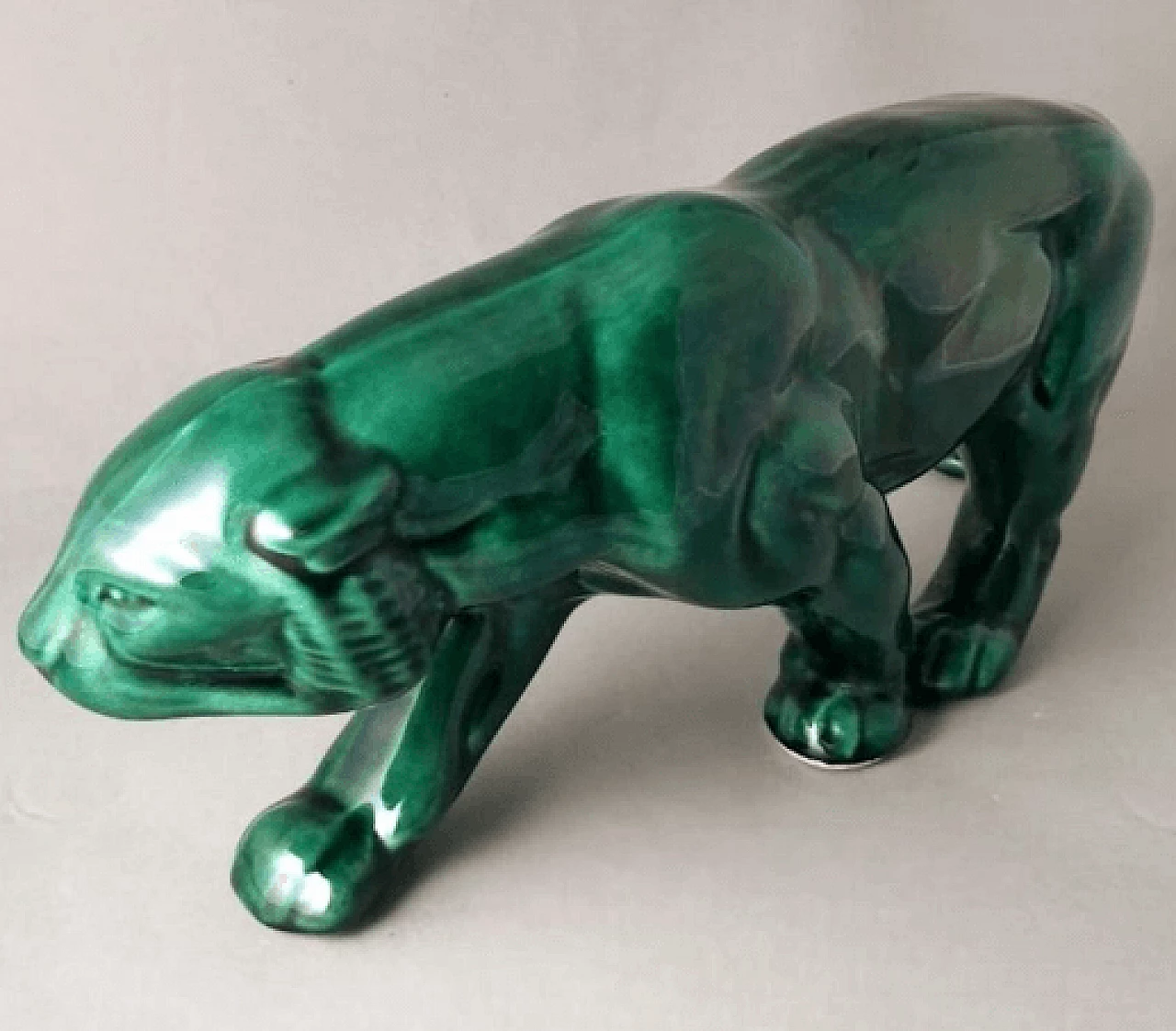
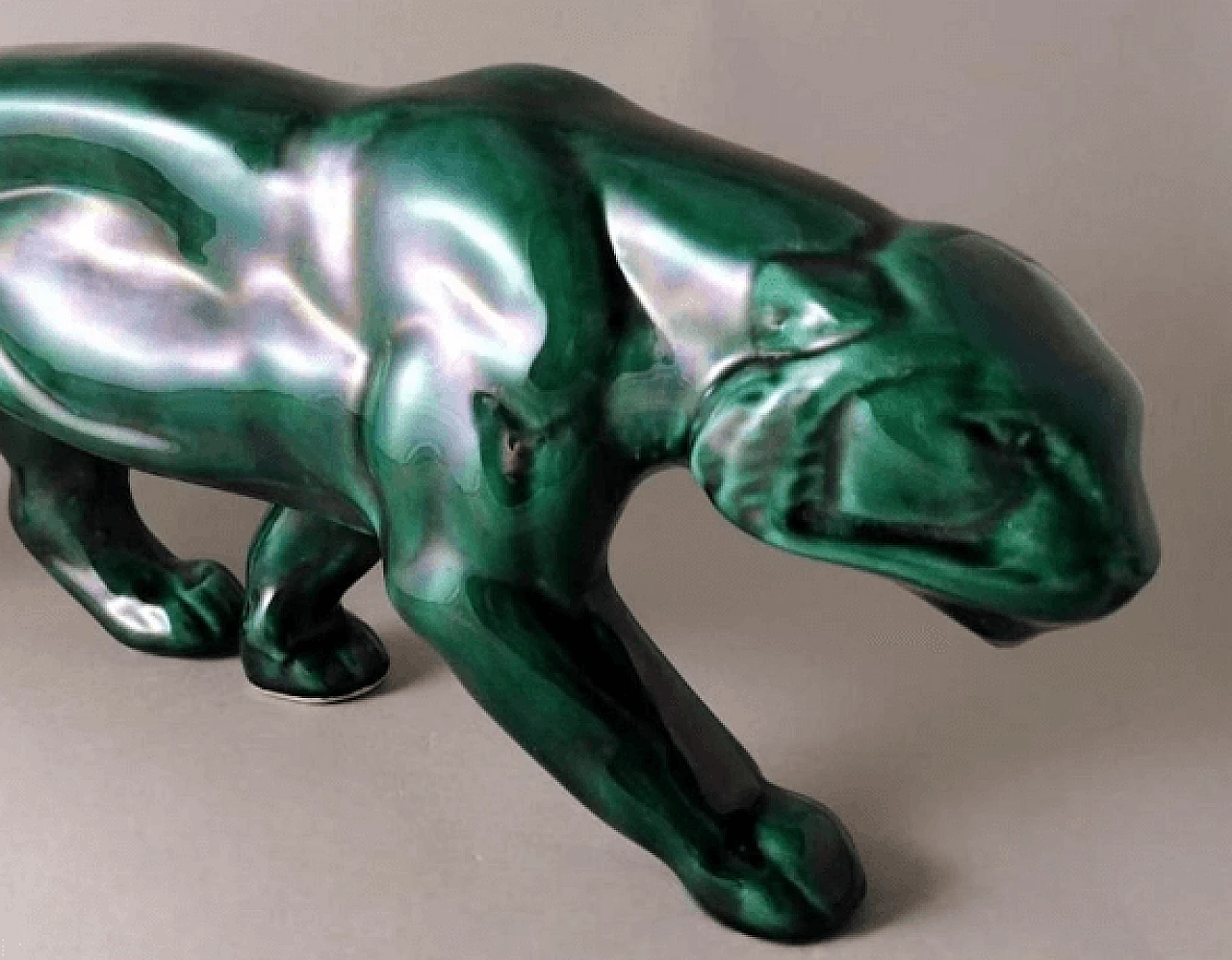
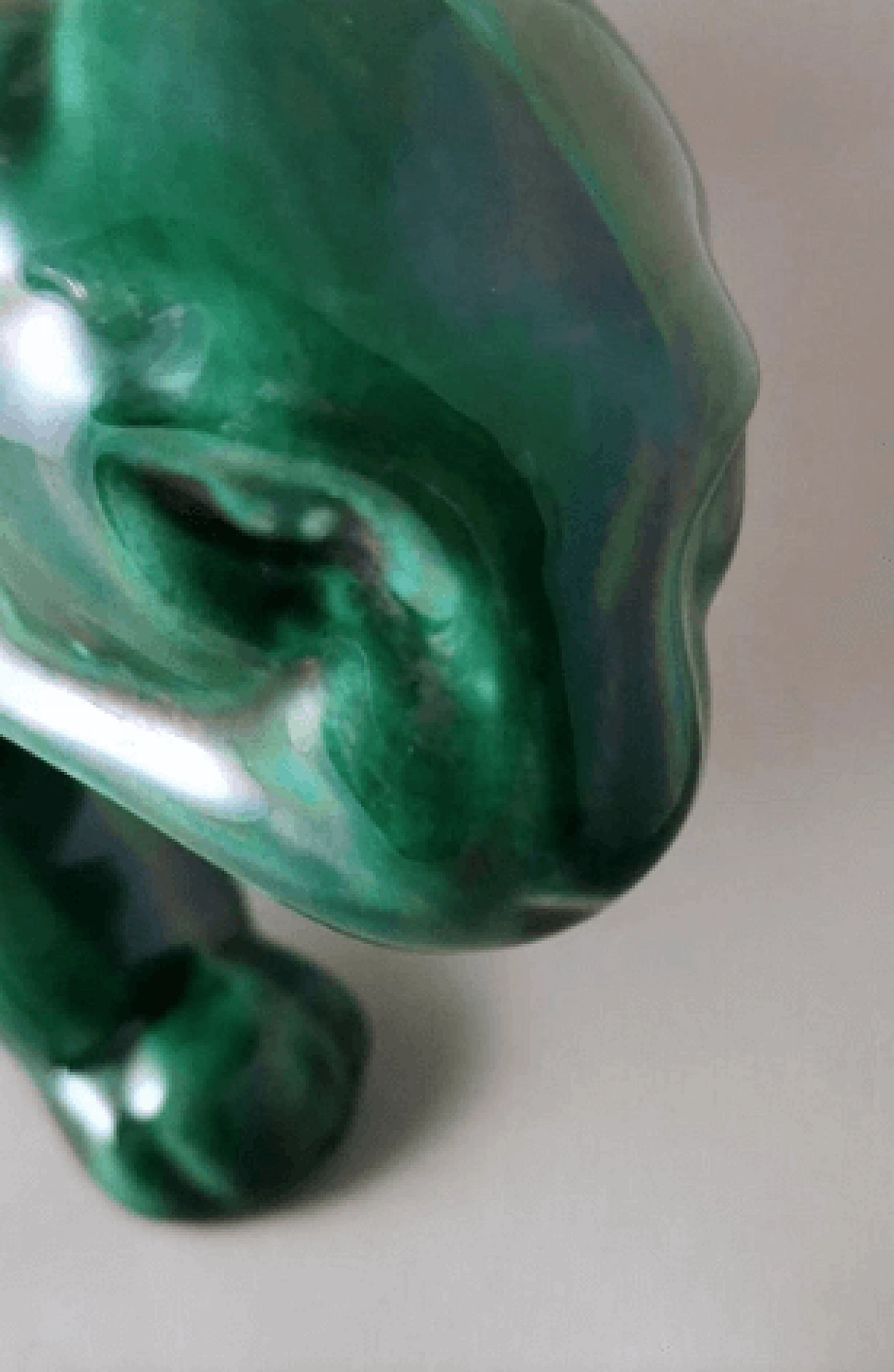
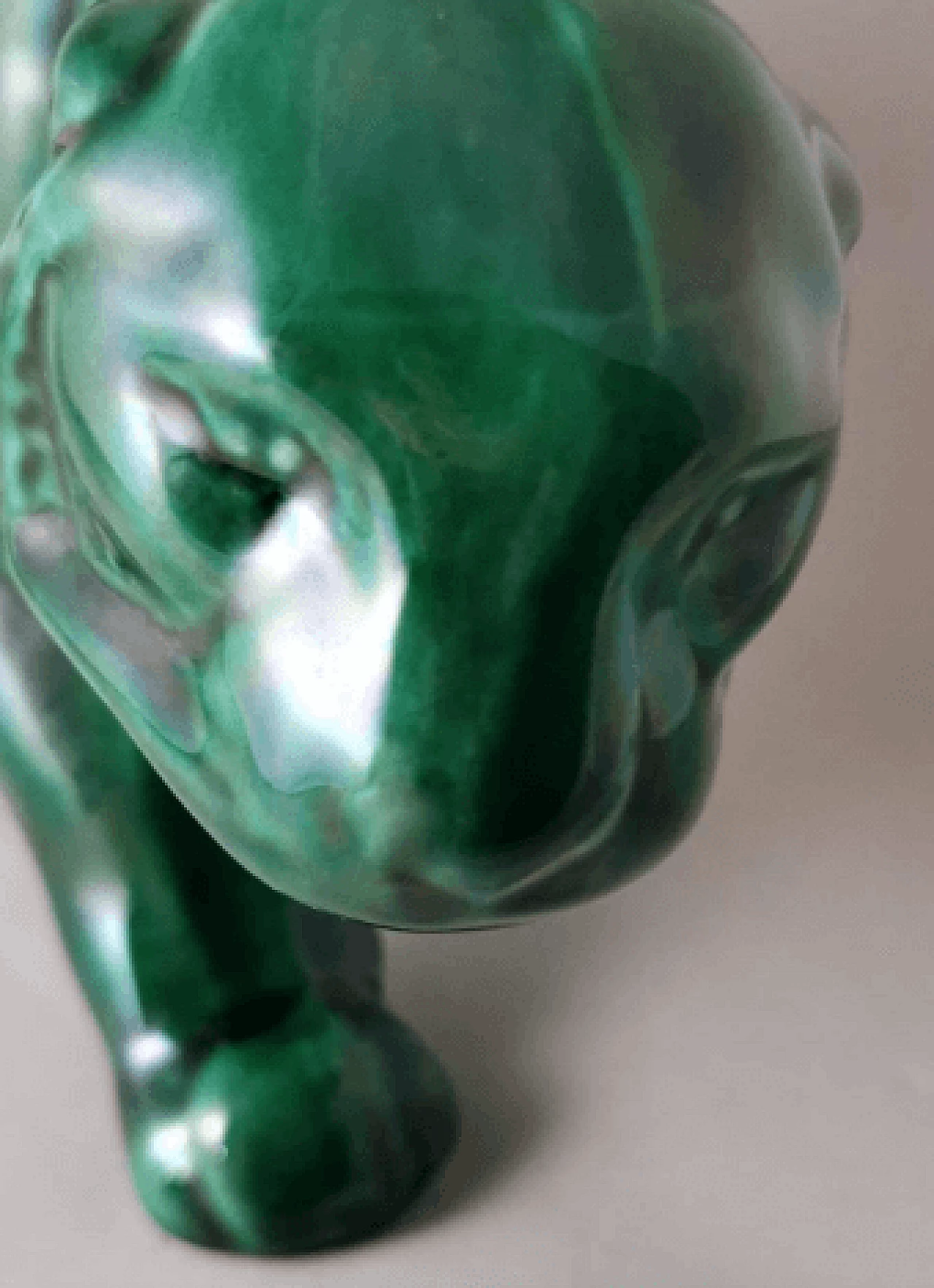
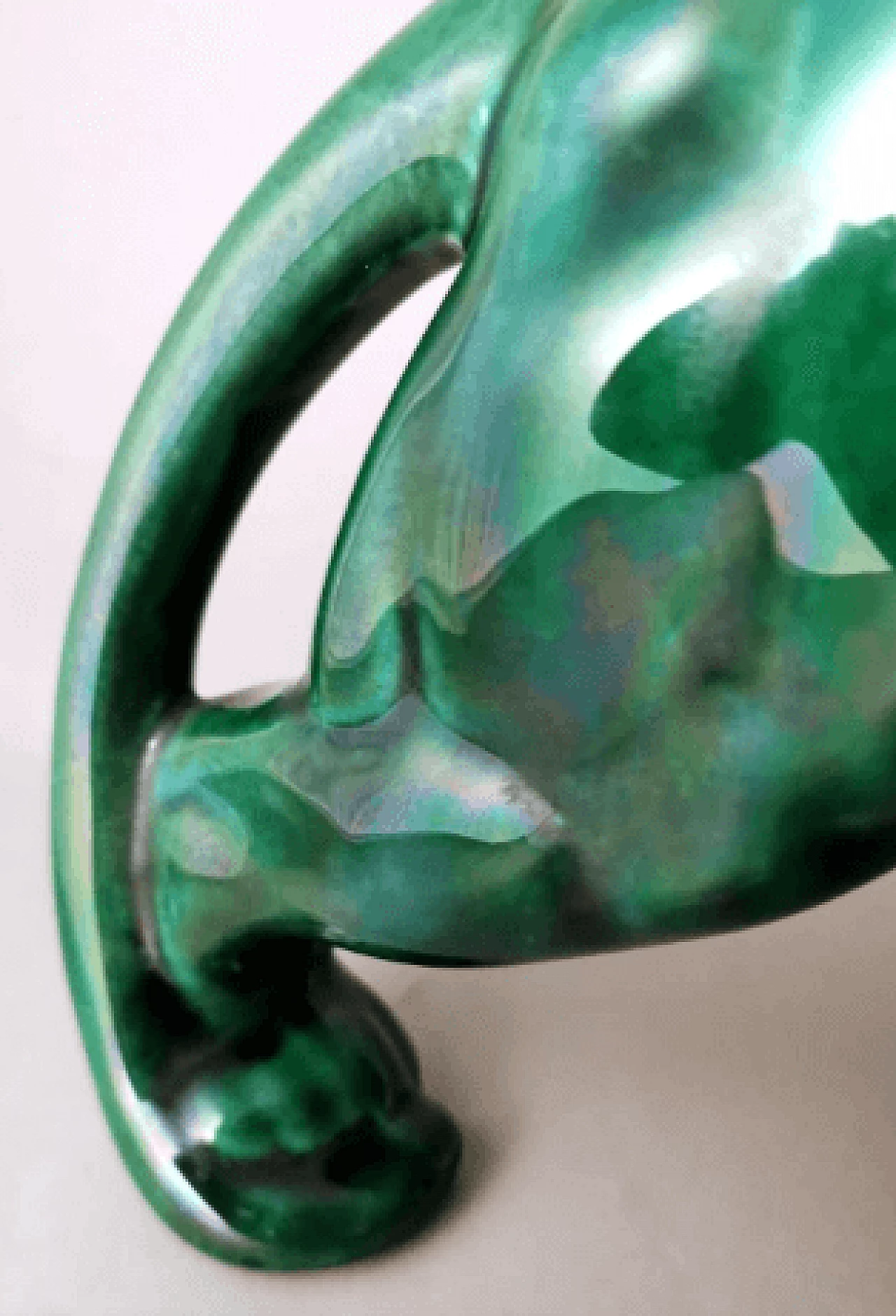
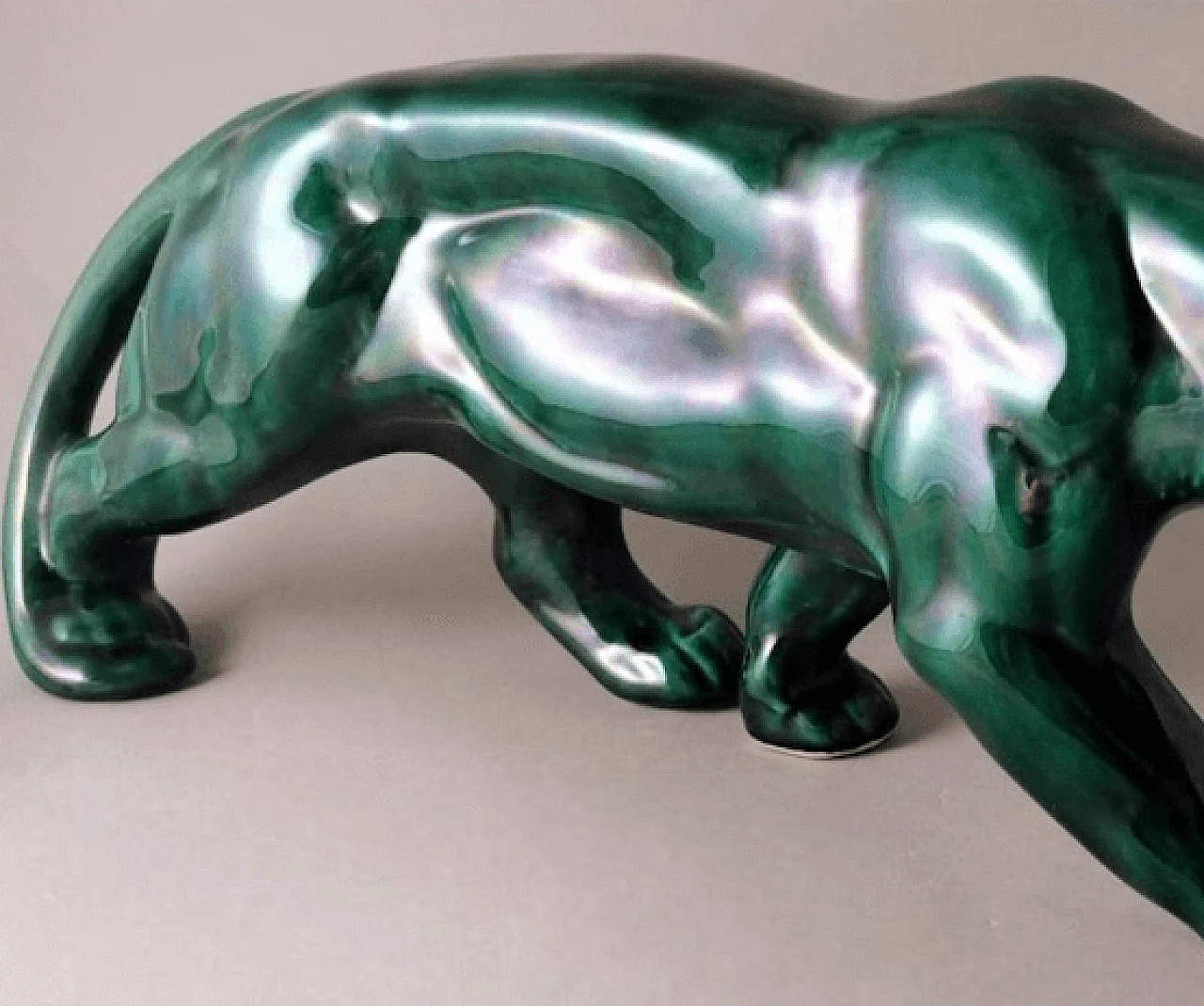
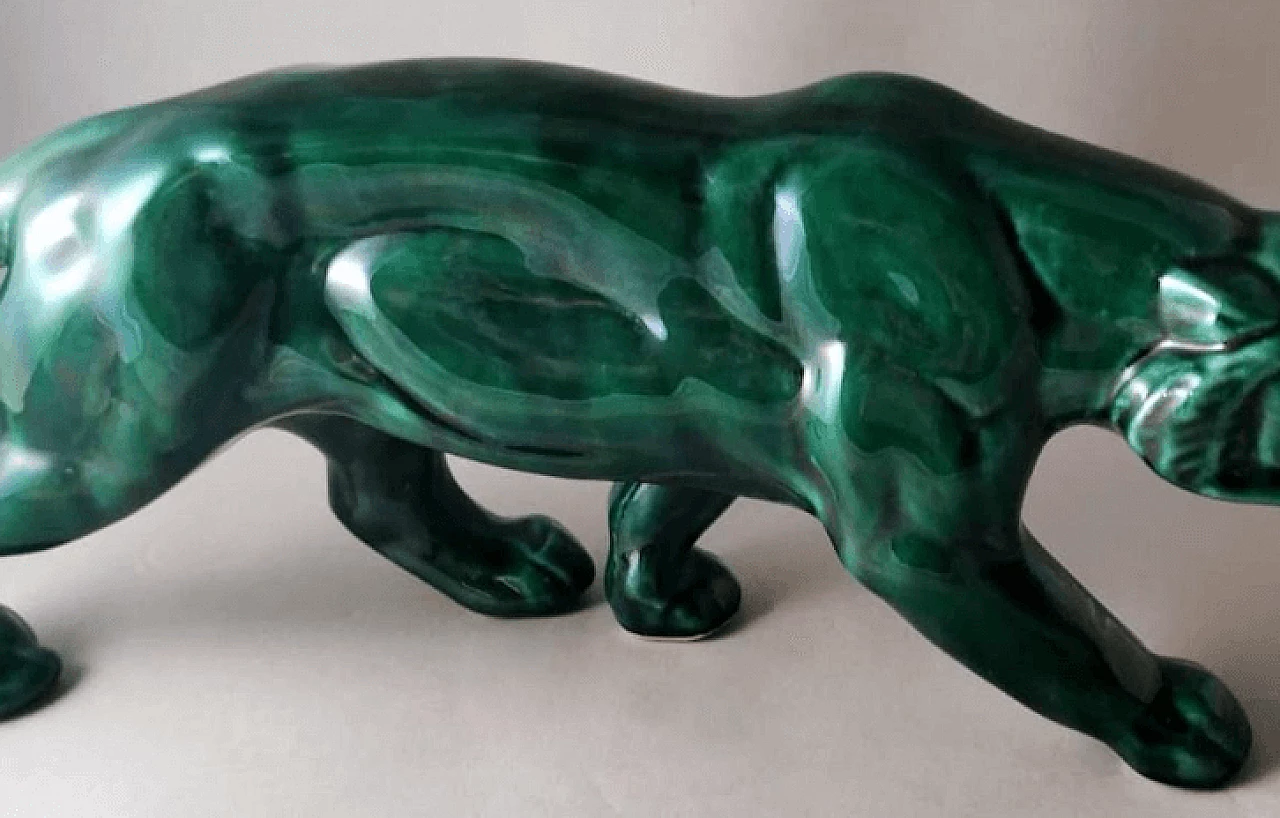
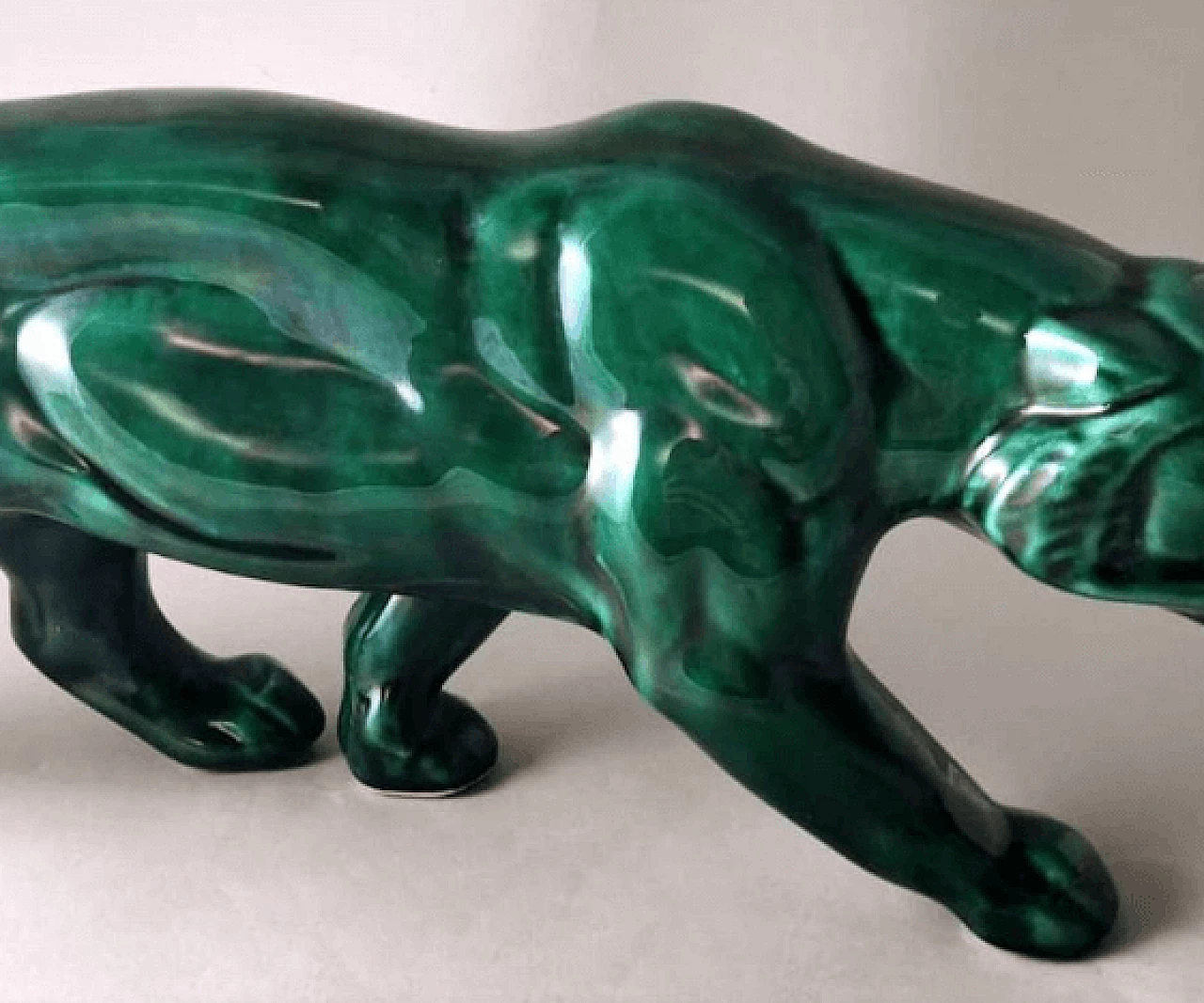
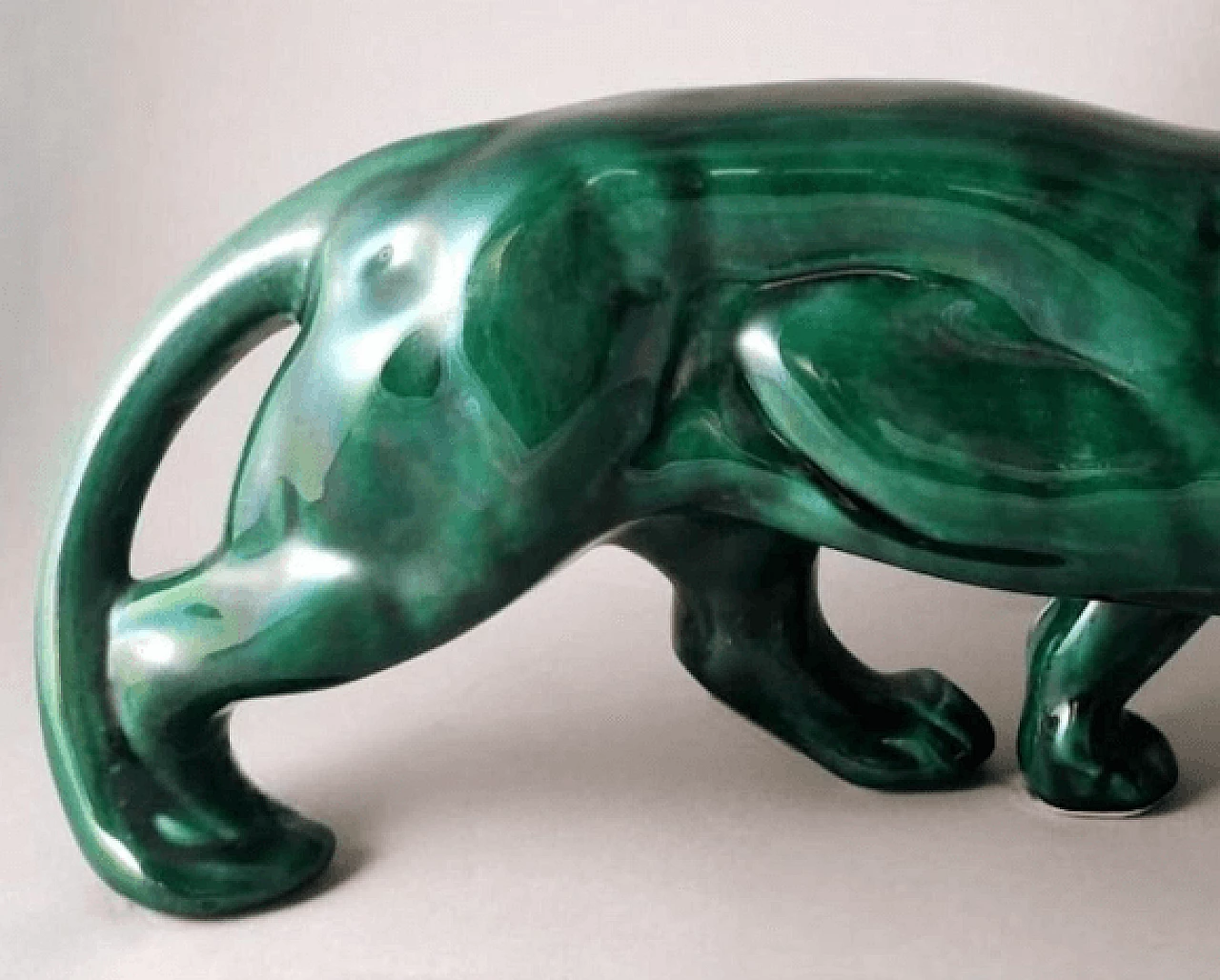
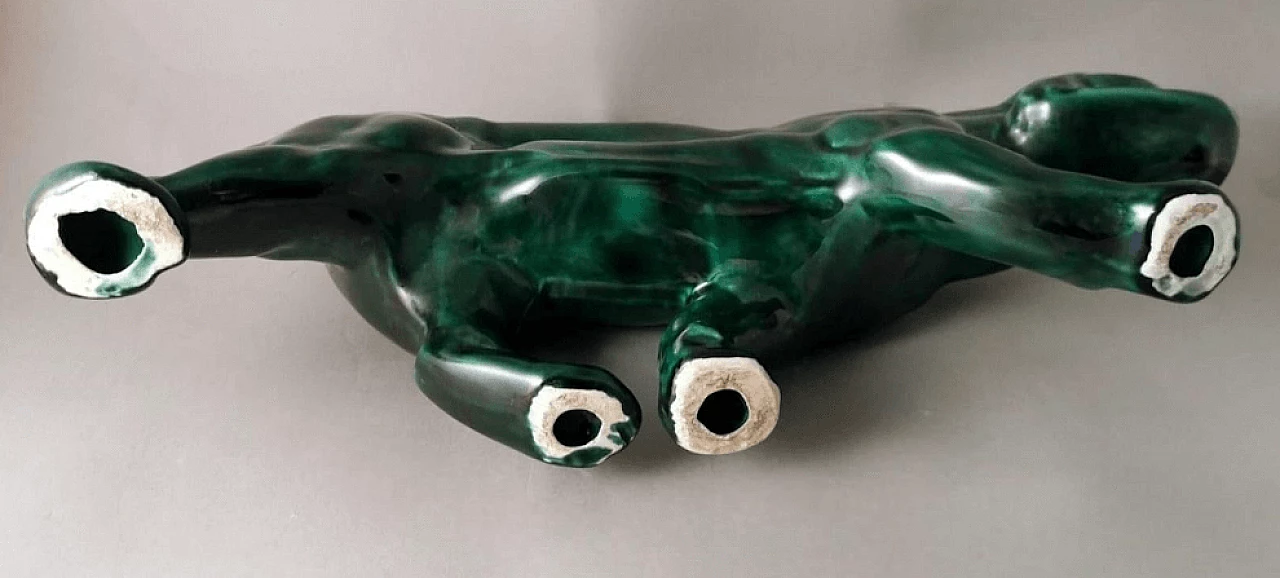





















Spectacular and iconic Art Deco style green glazed ceramic panther. The proud animal was depicted in its classic attitude when it tends to silently approach its prey before attacking it; the powerful, well-defined muscles highlight all the tension of the body ready for the deadly leap, a representation full of strength and suspense. A classic example of Art Deco which exalted the shapes, strength and power of both man and animals in its artistic expressions. The object presents a very particular workmanship: the piece of raw ceramic was first shaped into its soft and elegant final shape, then fired at around 1000°, then an ancient technique was used by applying "crystalline" (a vitreous coating transparent) with a bull's eye brush; then the red icing was distributed, again with a brush, all over the lion's body. The enamelling phase requires a lot of skill, as it is important that the enamel is deposited evenly on the surface of the object. At this point, very quickly, to fix the enamel, the piece was put in the oven between 920° and 940° for the final firing. By looking at the lower part of the legs we can better understand this technique. The panther was made between 1930 and 1933 in the Luneville area, France, in the style of the Saint-Clement manufacture. Saint Clement of Luneville is a famous French ceramic factory located in Luneville, in the Lorraine region. Founded in 1758 by Jacques Chambrette of Luneville, A. Clement is one of the oldest ceramic factories in France and the objects that are produced in Saint Clément and its surroundings are the fruit of this long tradition. The production of Saint-Clement, and that of the entire Luneville area, is known for its high quality and variety of styles. Over the centuries, the factory and artisans in the area have produced a wide range of ceramic objects, including plates, vases, figurines, sculptures and decorative objects. The production stands out for the beauty of the decorations, the attention to detail and the use of bright colors. Saint-Clement pottery has played an important role in the history of French ceramics and has continued its activity to the present day. Today the products of Saint-Clement and the entire Luneville region are still highly sought after and the factory has maintained its reputation for excellence in the field of artistic ceramics.
ID: 4672-1700732356-77201
Subscribe to our newsletter and enter in a world of antique, vintage and design wonders.

